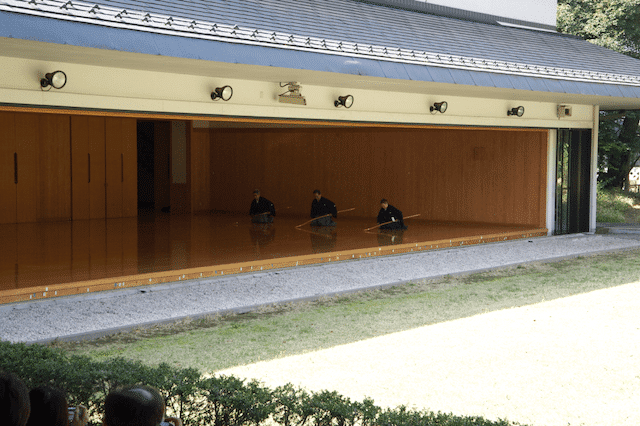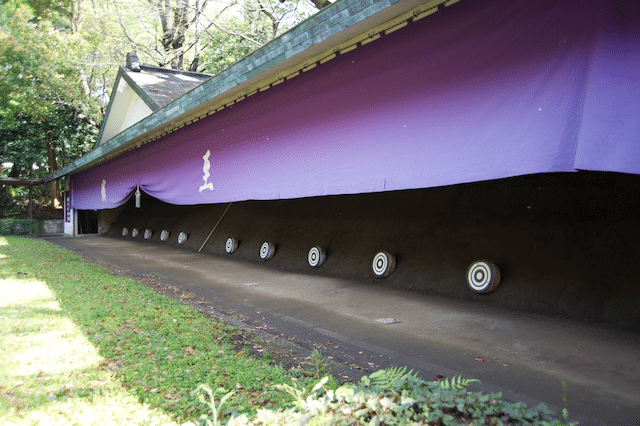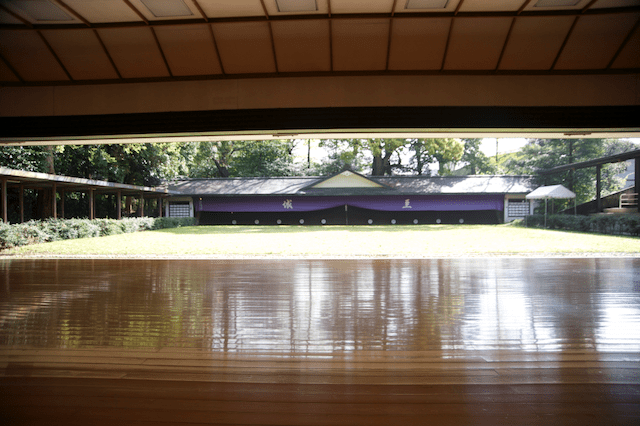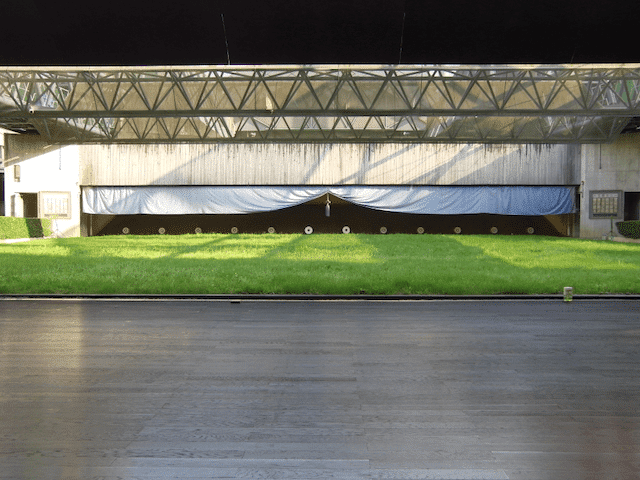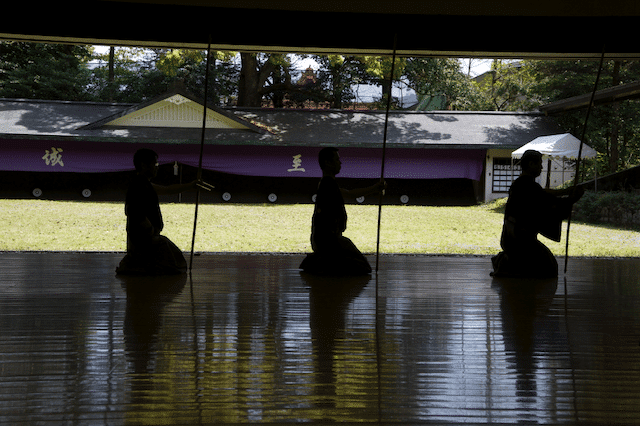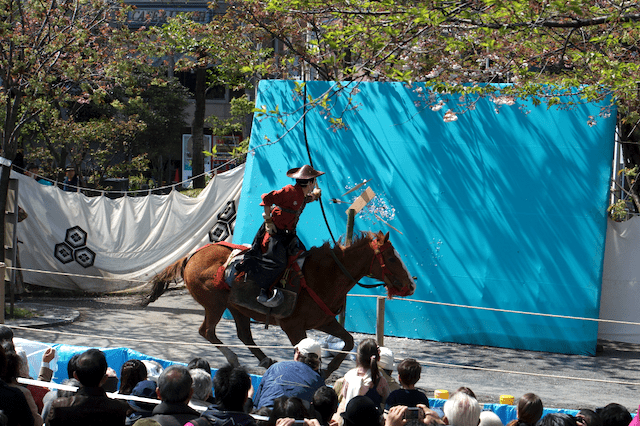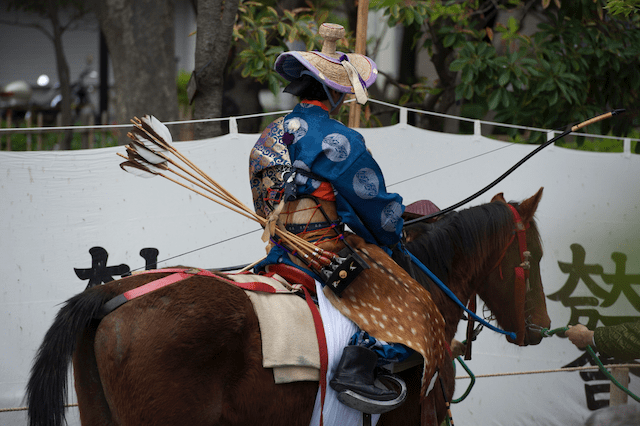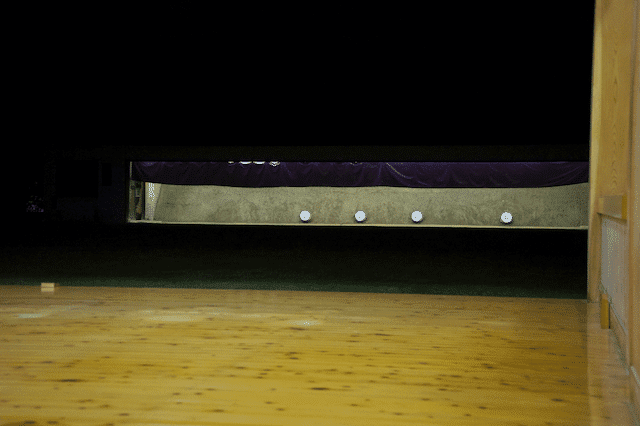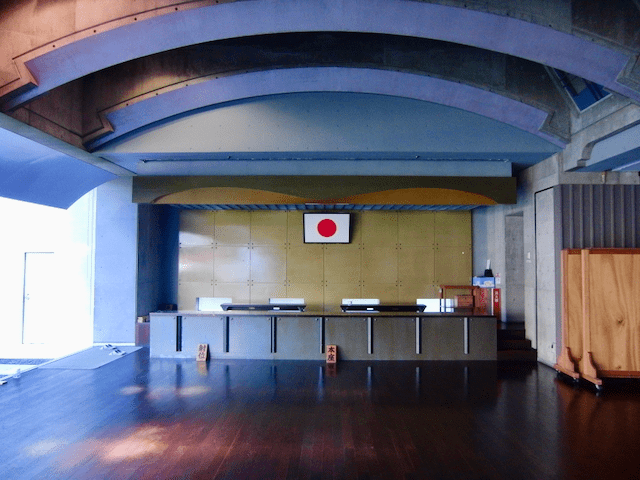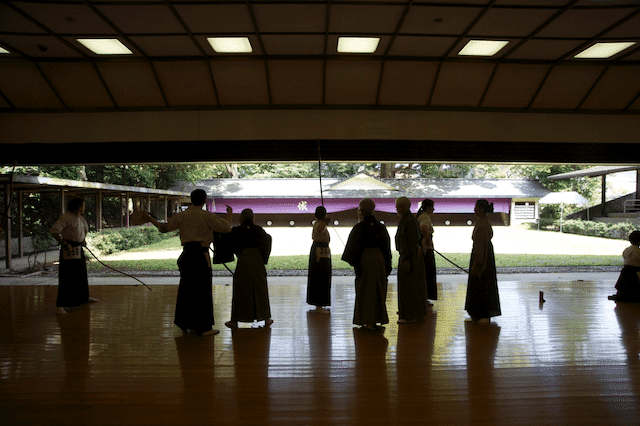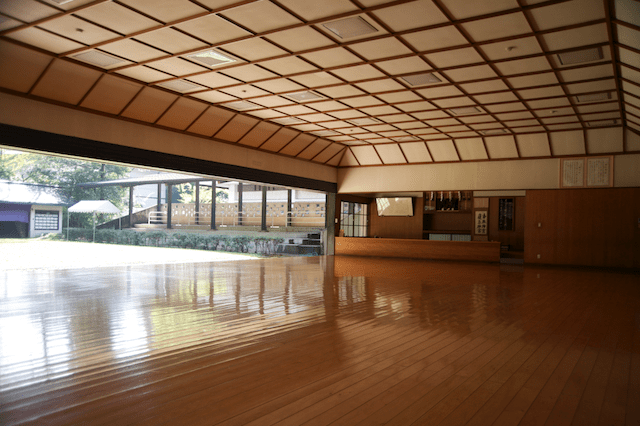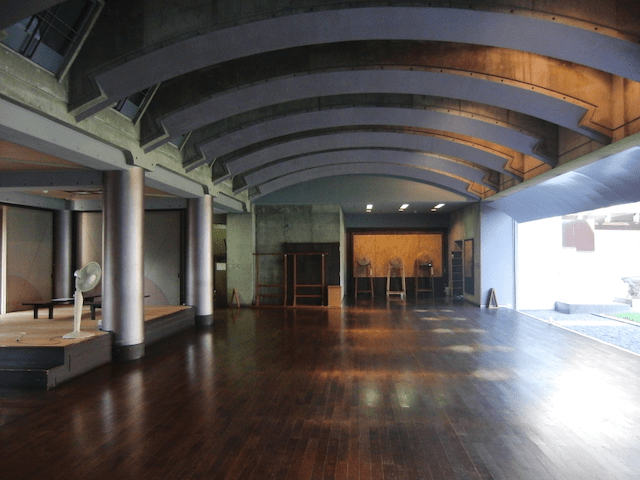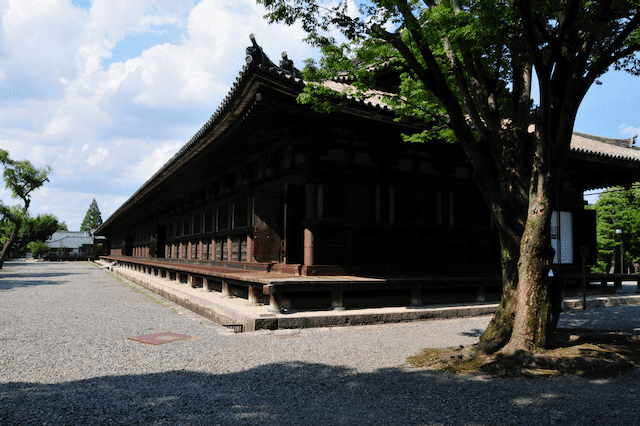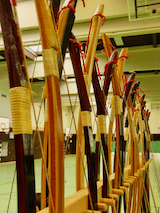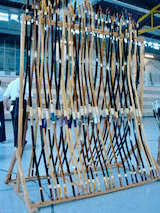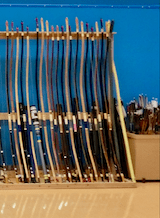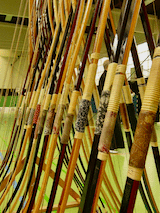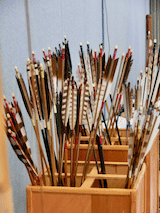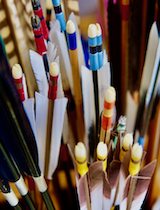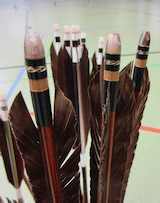!!! Diese Zeile nicht ändern oder löschen – Hier wird später das Untermenü eingefügt !!!
Kyūdō – "The art of Japanese archery"
What is Kyūdō?
In Japanese, Kyūdō (弓道) means the "way of the bow". The Japanese bow was used in various ways, for hunting, in war, for rituals, ceremonies and competitions. Nowadays it is primarily sports equipment and plays an important role in training the mind and body. The basic movements are easy to learn and are continuously refined during practice.
How we practice
- The basics of movement are practised with the slingshot (wooden handle and rubber band), then we switch to the bow. However, the slingshot is still used for practice purposes.
- Shooting at a short distance of about 2m (Makiwaramae), the movement forms and technique are improved.
- Shooting from a distance of 28m (matomae). Here, in addition to practising technique, group ceremonies are also part of the practise. Examinations and most competitions are held at this distance.
- Long range shooting at 60m (Entekimae) is currently not offered in Heidelberg. However, there are regular courses and competitions in Germany.
Kyūdō and Zen
Based on the well-known book by Eugen Herrigel, Kyûdô is often equated with Zen mediation in Germany. While the focus and concentration on each individual shot does (can) have meditative aspects, this is only one point of view. As mentioned above, this martial art serves to train body and mind. Herrigel in his time had a strong focus on learning the physical technique in the beginning, which according to lore led to the teacher's instructions being largely focused on learning the spiritual aspects. However, this does not mean for everyone else that meditation is the sole purpose of Kyûdô. Instead, the aim is a unity of body and mind that is also able to give us a grounding of serenity for everyday life.
!!! Diese Zeile nicht ändern oder löschen – wird für das Untermenü benötigt !!!
2019

50 years Kyūdō in Germany
In September 1969, the first Kyūdō seminar with INAGAKI Genshiro Sensei took place in Hamburg. From this first Kyūdō association the German Kyūdō Federation developed, with today more than 1200 members in 50 clubs.
2006

IKYF Foundation
Foundation of the International Kyūdō Federation (IKYF) in Kyoto/Japan
2003
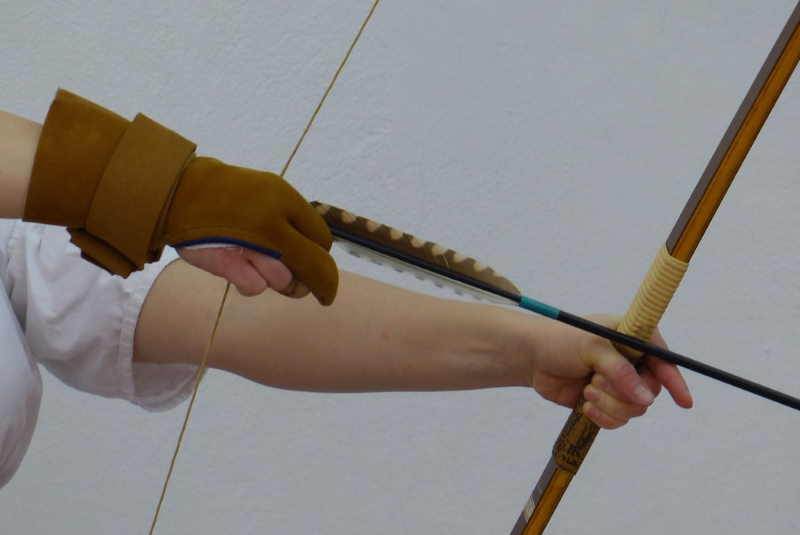
Kyūdō founded in PSV
Gründung der Kyūdō Gruppe, motiviert durch großes Interesse nach Veranstaltungen im Rahmen der “Kumamoto-Woche der Begegnungen” im Jahr 2000.
1994

DKyuB Foundation
Foundation of the German Kyūdōbund e V. (DKyuB)
1980

EKF Foundation
Foundation of the European Kyūdō Federation (EKF)
1974
Founding of the Kyūdō Section in the German Judo Association.
1969
Founding of a first Kyūdō group in Hamburg after a visit by Japanese Kyūdō teachers
1949

ANKF Foundation
Gründung des “Alljapanischen Kyūdō Verbandes” (jap. ZNKR: Zen Nihon Kyūdō Renmei bzw. engl. ANKF: All Nippon Kyūdō Federation) nach Einwilligung der amerikanischen Militärregierung
After World War 2
Ban on Kyūdō and other Japanese martial arts by the American military government
Two different techniques are practised in our group
Heki-Ryû Insai-Ha (Shamen)
This old school has its origins in the 17th century, when the samurai were the ruling caste. The martial origins are therefore more present for the Heki-Ryû than for the modern Shômen style (see next paragraph). In the Heki school, the bow is raised sideways and a special technique is used to achieve a powerful and accurate shot.
Heki-Ryû Insai-Ha was introduced to Germany in 1969 by Prof. Genshiro Inagaki and has been the predominant school here ever since.
Heki-Ryû Insai-Ha was introduced to Germany by Prof. Genshiro Inagaki and has been the predominant school since then.
ANKF (All Nippon Kyūdō Federation) – Shômen
The ANKF Shômen style was developed after the Second World War. During American occupation, the practice of martial arts was forbidden in Japan. This style emerged as a combination of many old schools and styles and is the most widespread technique in Japan today. "Shômen" refers to the lifting of the bow centrally in front of the body, the technique differs in some aspects from Heki-Ryû. The concept of Shin Zen Bi (truth, goodness and beauty) is prominent alongside practice of etiquette, elegance and ceremony.
Both techniques have similarities and also their respective advantages. During practice you can see both and will learn one of them.
Personal equipment
Our bow
The Japanese bow has several special features. In addition to its length of more than two metres, it is also asymmetrically constructed, with the grip located above the lower third of the bow. Until today it is made using traditional methods and is particularly elegant in appearance. This construction allows for an unusually long draw length, thus requiring particularly long arrows.
Our club has several bows for beginners.
Arrows
Kyūdō arrows are made from aluminium, carbon or, traditionally, from bamboo. They are available in different wall thicknesses for different purposes. Nowadays, three different types of tips are used for Makiwara at 2m, 28m and 60m distances. The feathers are mostly from turkey, in accordance with species protection.
A Makiwara arrow is needed as soon as we start practicing at the Makiwara.

The glove
The Kyūdō glove is made of smoked deerskin. Depending on the quality, a varying number of layers is glued and sewn together. A hard sleeve is incorporated in the thumb to absorb the pull of the string in the string pit.
The glove is our most important personal material. It should be purchased together with the makiwara arrow after a few weeks of training. Women additionally need a muneate (chest protector).

Clothes
For the beginning, loose, comfortable clothing in which you can easily move is sufficient.
After a few weeks or months - depending on training frequency, progress and personal interest - you can acquire hakama, keiko-gi, obi and tabi. This is our traditional training clothing, consisting of specific skirt, white training shirt, special wrap belt and toe socks.
Dojo equipment

Makiwara
Makiwara, a compact roll of rice straw, is used for short range practice, a distance of about 2m. Alternatives, made for example, of solid foam or barrels stuffed with paper.

Ulrich Meinberg
5. Dan
Trainer C, Examiner
2001 habe ich auf dem Japanfest in Hanau erstmalig eine Kyūdō Vorführung gesehen. Als nicht Ballsport affiner Mensch war mir sofort klar – das ist es. Nachgefragt, Anfängerkurs beim Kyūdōjo in Frankfurt am Main belegt mit dem Glück, einen japanischen Lehrer zu haben. Shigeyasu Kameo hat mir Kyūdō (Shômen Technik) beigebracht und immer wieder verfeinert. Seminare, auch im europäischen Umland halfen mein Kyūdō immer weiter zu verbessern. Japan Aufenthalte, verbunden mit Training im lokalen Dojo waren Highlights für mich. Nach 14 Jahren in Frankfurt, zuletzt als Trainer der Shômen Gruppe bin ich durch Umzug zum PSV gekommen. An Kyūdō begeistert mich nach wie vor die Form, Konzentration, das Abschalten von der Umgebung und die Möglichkeit, Interessierten diesen schönen Sport beibringen zu können.

Dr. Richard Hermann
3. Dan
Trainer C
After gaining experience with various martial arts, I arrived at Kyudo in 1994.
Originally it was curiosity. I couldn't believe the transcendental kyudo experiences described by E. Herrigel in his book "ZEN in the Art of Archery" - I still don't believe it.
Initially in the Bad-Dürkheim Kyudo group, I have been a founding member of the Heidelberg Kyudo group at PSV-HD since 2003 and a trainer of the Shamen style (Heki-Ryû Insai-Ha in the tradition of Prof Genshiro Inagaki, see above under shooting techniques) since 2006. As a "martial" direction of Kyudo, the "Do" (the way) by mastering the "Jutsu" (the art, the technique) is the most important focus.
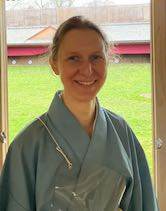
Julia Kersten
4. Dan
Trainerin
Originally, I was looking for a type of archery where no stabilisers, aiming aids and other accessories are used. Finally, I came across Kyūdō and was fascinated by the aesthetics, the etiquette and, quite trivially, the possibility to do something beneficial for my back. What still captivates me is the mixture of strength, patience with oneself, and focus that is necessary to improve. In addition the opportunity to completely switch off from daily life and associated problems while practicing, there are also many ceremonies that make the training more colourful. Integrating these into the practice gives the opportunity to complement the self-centered training with detailed, group-oriented elements. Overall, I appreciate the outward tranquility of this sport, which nevertheless has so much complexity, challenge and addictive potential that I hope to be able to pursue it for a long time.
German Kyudo Association – national
Landesverbände – national
International 2024
Contact Us
Julia Kersten![]() +49 160 – 25 00 23 6
+49 160 – 25 00 23 6![]()
Ulrich Meinberg![]() +49 151 – 42 31 37 89
+49 151 – 42 31 37 89![]()
Dr. Richard Hermann![]() +49 6221 – 48 00 77
+49 6221 – 48 00 77![]()
Locations
TSG 78 - Tennis hall
Tiergartenstraße 9
69120 Heidelberg
Auditorium der
Julius-Springer-Schule
Elsa-Brandström-Straße 8
69126 Heidelberg
Preamble
As in the other budo arts, the Kyūdō has a number of rules that are to be regarded as an expression of good manners towards each other and respect towards the teacher, the tradition and the dojo.
The rules listed here represent the most important ones that every Kyūdōka should observe, both in Japan and in Europe. These instructions for behaviour are not only to be justified traditionally, but are fundamentally useful for practice. A beginner in Kyūdō cannot yet immediately practise with a bow, but it is possible for him to train attention and mindfulness by making an effort to behave according to Kyūdō etiquette in the dojo and to learn to understand that Kyūdō cannot only be practised with a bow.
Das Studium des Kyūdō bedeutet permanente Arbeit an sich selbst sowohl im Dojo als auch im sonstigen täglichen Leben. Das Ziel eines ausgeglichenen Lebens lässt sich nicht ohne Anstrengung, Respekt vor anderen Menschen und Geduld erreichen. Maximen, wie dies erlangt werden kann, lauten in Japan z.B. “Beobachte Natur und Menschen aufmerksam und lerne“, “Sind Dein Blick und Sinn klar; ist auch die Welt ordentlich und klar”. Die nachfolgenden Regeln beschreiben in einigen Einzelheiten Verhaltensbereiche, um sich in diesem Sinne einem solchen Ziel zu nähern.
Dojo Etiquette
- When entering and leaving the dojo, the Kyūdōka bows at the entrance first to the kamiza and then to those present.
- When entering the dojo, street shoes are left outside the door.
- A Kyūdōka arrives at the dojo in good time so that all preparations, e.g. putting on clothes, stretching the bow, preparing the dojo, etc., are completed by the time training begins.
- When lining up for the welcome, the most advanced members are closest to the kamiza.
- Before the greeting, all equipment necessary for shooting is to be removed e.g. glove, muneate, tsurumaki etc.
- Before and after the exercise one greets or bids farewell to the teacher with a bow. This personal greeting should also be done when the group has performed a common "Rei".
- When a teacher or elder corrects another Kyūdōka, the latter bows before and after the correction and thanks him or her for the advice and guidance received.
- When one wishes to speak to the teacher, one assumes the same position as the teacher, i.e. one sits down before speaking if the teacher is sitting or stands if the teacher is standing.
- The mato furthest to the left is reserved for the teacher (ochi-mato). The following mato are allocated according to grade or age. Beginners shoot against the mato furthest to the right.
- In the absence of the teacher, the next shooter in position will lead the dojo and take over the teacher's duties.
- The rules for safety within the dojo must be strictly observed, e.g. shooting order, retrieving arrows, etc.
- All members should participate in the work and tasks in the dojo according to their abilities, e.g. floor cleaning, mato gluing, azuchi care. Equipment maintenance, organisational matters, teaching and competition and examination events.
- No talking is allowed in the firing zone, except for corrections. For breaks, equipment maintenance and discussions, the area beyond the honza or an adjoining room must always be used.
- Eating, smoking and drinking is only permitted during breaks in the rest area. Break regulations must be observed, e.g. common breaks every 12 shots during group training or similar.
- It is forbidden to touch or even use the equipment of another shooter. Exceptions may of course be permitted by the owner after consultation.
- Bows, arrows or other equipment are passed among themselves in such a way that the usual type of barrel can be executed immediately.
- The clothing worn in the dojo should be correctly put on and clean.
- The glove and muneate shall be put on and taken off in the kneeling position. Exception: If the ground could soil the clothing, e.g. outdoors.
- Before the arrows are retrieved from the target area, the glove is removed.
- It is forbidden to look over the arrow of a shooter unless he expressly wishes to do so. The teacher is exempt from this commandment,
- Except for the instructor, no other shooter shall give an unsolicited opinion of a shot or correction to another shooter.
Forms of greeting
The Kyūdōka assemble (command: Shugo) in the firing zone and line up according to the rules facing the kamiza. The teacher stands in front of the students also facing the kamiza. The oldest or highest-graded student gives the command: "Rei". Teacher and students first bow together to the kamiza and then, after the teacher has turned to the students, bow again to each other. The bow is performed in a standing position, with the upper body leaning slightly forward. The hands remain on the thighs, the back and neck are kept straight while bowing, and the head is not lowered.
In Japan, facing the kamiza, the following opening and closing ceremony is also practised to welcome and invoke the respective kami (deity): Teacher and students stand facing the kamiza according to the rules and kneel down to the kneeling position (seiza) on the command "seiza". Everyone now bows three times to the kamiza, then raises their hands to face level with fingers extended as if in prayer and claps their hands together twice. After another bow in seiza, everyone rises, the teacher turns to the students and they bow to each other in a standing position.
In general, the following form of greeting is also found in the budo arts: teacher and students take their respective places and kneel down to a kneeling position on the command "Seiza". After the command "Mokuso" (concentration), all put their hands together in the same way as in zazen meditation, i.e. the right hand is placed with the palm facing upwards in front of the lower abdomen, the left hand rests in the same position in the right hand. The tips of the thumbs touch each other and form a ring. After about 3-5 minutes, after the command "Mokuso-Yame" (end of concentration), the hands are placed on the thighs again. At the command "Rei" or "Sensei ni rei" (greet the teacher) the students and teacher bow to each other. After the teacher stands up, the students also rise.
Safety Regulations Deutscher Kyūdō Bund e.V.
As of 29.10.2006
§ 1 General
(1) These Safety Regulations must be signed by the examinee at the examinations from Kyu 5 onwards. The contents may be part of these examinations. A corresponding entry in the Kyūdō passport is made by the Chairman of the Examination Commission.
(2) In principle, the DKyuB sports regulations and the respective dojo regulations apply.
(3) Authorised to issue instructions and responsible for regular training are the training supervisor appointed by the club board, for competitions and courses at national level the competition management appointed by the organiser or host as well as the board of the DKyuB. The respective person in charge can appoint a representative or have one appointed by the organiser. The persons in charge must be able to prove that they have the necessary qualifications. In the case of competitions and training courses, the organiser can demand corresponding proof. If this proof cannot be provided, the organiser can reject the responsible person and, if necessary, cancel the event.
3.1 The proof of qualification for competitions is the successful completion of a referee (competition leader) licence course, for courses the completed training as a trainer.
3.2 The instructions of the person in charge must be followed. This applies to order and behaviour on the court (dojo) and to the equipment, if it has safety-relevant defects. In the event of non-compliance with instructions, the person in charge shall exclude the person concerned from the event. In this respect, he exercises domiciliary rights on behalf of the organiser and the event organiser. Helpers and spectators are also subject to this authority.
(4) Only shooters who have passed the 4th Kyu examination are admitted to mato shooting. The first time should be strictly under the supervision of the instructor or a Kyūdōka appointed by the instructor.
§ 2 Platz 1
(1) At events, the organiser must be aware of the nearest available telephone and the telephone number of the responsible rescue service and hospital. A "first aid" kit must be available at the shooting range. A suitable first aider shall be provided.
(2) The shooting range or the danger zone of a dojo is to be marked and secured by sufficient markings (written signs, routing tape, barriers etc.). This also applies to Enteki and long range shooting events.
(3) For long range shooting (60 m and more), a sufficiently large reserve distance must be clearly marked behind the intended target or impact area, which may not be entered. If necessary, this area is to be cordoned off and supervised.
(4) Outdoors and in halls it must be ensured that bystanders do not reach the lateral borders of the shooting range or behind the target (Makiwara, Mato, impact area during Enteki and long range shooting). Seats must be provided for visitors to events and spectators during training. There must be no spectator seats in the area of the Azuchi. Any hall doors in front of the Shai and especially in the Azuchi area must be kept closed. Spectators and third parties may only enter the shooting area under supervision or with permission.
(5) Equipment may only be located behind the honza. A minimum distance of three metres from the makiwara must be maintained.
(6) The shai must not be crossed during shooting. The space between the honza and the shai must remain clear. Practice leaders and correction partners are exempt from this regulation. During competitions only the competition management may enter this area. Helpers may only enter this area with the permission of the competition director.
(7) Any stringing of the bow with an arrow in it must always be done in the direction of the makiwara or mato. Under no circumstances may bystanders be endangered.
(8) In halls, arrow nets must be hung freely and at a distance from the wall behind. The nets must have a minimum height of 180 cm and project at least 150 cm beyond the first and last mato.
(9) During competitions, a continuous azuchi (for example made of straw bales) shall be erected to absorb ricochets as far as possible.
(10) During competitions, the Kanteki shall stay behind a sufficiently high and wide protection (box or similar).
(11) The yatori (arrow fetchers) gather at the side next to or just in front of the shai. After their clapping, the call to fetch the arrows is made by the "onegai shimasu" or the "please" ("dozo") of the practitioners. This call may only be given when no archer has raised the bow. At competitions and training courses this request may only be given by the competition management or an authorised person. In any case, care must be taken that the person giving the command overlooks all archers.
(12) No bow may be raised after the yatori has been clapped. One waits in the dozukuri or yugamae until the shooting range is cleared.
(13) The release of the shooting range is done by the last Yatori, when he has left the hitting range sufficiently far, by calling "Free!".
(14) In case of ricochets, the normal training will proceed accordingly.
(15) Makiwara must be sufficiently stuffed to prevent the arrows from bouncing off. The diameter of a makiwara must be at least 35 cm.
(16) After the neighbouring makiwara shooter's uchiokoshi, wait until the shooter has shot before pulling out the arrow. The shooter waits at the firing line.
§ 3 Equipment
(1) Only shooters with faultless equipment will be admitted to shooting. Complaints can be made by the responsible person.
(2) Special care must be taken not to use defective arrow shafts and cams. A correct nakajikake (tendon reinforcement) must be fitted.
(3) Makiwara arrows may not be shot at range.2
(4) The length of the arrow should exceed the shooter's full extension by at least three centimetres.
(5) In competitions, the equipment of each shooter may be checked by the competition management.
1 refer to Competition Rules § 1, especially paragraph 1 Rules 11th Supplement to the 5th Edition
2 i.e. significantly more than the length of a bow.













